| |
|

FRIDAY, JUNE 20 Temple Solel Freilich Friday


bethel
Friday, July 11 Congregation Beth El Kabbalat Shabbat Services


LETTER FROM JERUSALEM
The political math of a Gaza invasion
By Ira Sharkansky
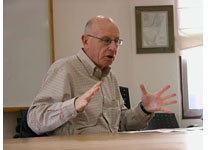 JERUSALEM—Reasons for delaying a major attack on Gaza are well known. They include the cost in Israeli casualties, compared to what Israelis currently suffer; the likelihood of international condemnation; and the temporary and partial relief that such an attack is likely to produce. JERUSALEM—Reasons for delaying a major attack on Gaza are well known. They include the cost in Israeli casualties, compared to what Israelis currently suffer; the likelihood of international condemnation; and the temporary and partial relief that such an attack is likely to produce.
Now there is another factor. Egypt is trying to mediate a cease fire between Israel and Gaza, and Israel wants to give the Egyptians sufficient time to probe the prospects. Perhaps they will come to see the impossibility of dealing with Hamas, and thus add to the international credibility of Israeli actions when it does attack.
The issue of relative costs is complicated. Tension on the people living alongside Gaza is a real problem. They deserve better. But one recent day illustrates the arithmetic. There were more than 50 rockets and mortars fired toward Israel. The sole physical injury was a woman injured by shrapnel. The hospital defined her condition as from light to moderate. There was property damage, less than due to a Midwestern tornado. On the same day, 14 Palestinians died and many more were injured.
The people of Gaza are not eating as well as they were. Supplies of petroleum are limited, and causing more of them to walk, or ride donkey carts rather than spend a couple of days in line at a gas station. Electricity is available, but not always.
In short, Israel is putting significant pressure on Gaza without a major invasion. It may be a cost-effective way of dealing with Palestinian aggression.
There is also a bit of party politics in the calculations of those Israelis making decisions.
A prominent opponent of a major assault is Ehud Barak. He is head of the Labor Party, Defense Minister, former Prime Minister and former chief of the IDF general staff. Why does he oppose? See the above. Plus he may want to firm up his party's reputation as being accommodationist with respect to the Palestinians. He wants to give maximum chance to prospects of a cease fire.
Accommodation may not be a good move for the party. Many Israelis want to deal forcefully with Hamas. The Labor Party's posture in favor of accommodation, plus occasional expressions in favor of socialism, has seen its fortunes fall from 44 Knesset seats in 1992 to 19 today.
Barak may also not want to invade while Ehud Olmert is the prime minister. A major operation could boost Olmert's flagging reputation, less than 20 percent approval according to recent polls.
It is not clear how much Olmert wants to attack. His hasty decision to invade Lebanon in 2006 is one of the things that got him into trouble. Also, the Kadima Party foreign minister, Tzipi Livni, usually says positive things about Condoleezza Rice's peace efforts. She may not want to spoil those prospects with a military campaign.
The right wing opposition is all in favor of an invasion. Bibi Netanyahu, head of Likud, is one of the loudest voices. Currently he is leading 12 seats in the Knesset, down from 32 in 1992 and 38 in 2003. He is hoping for bigger things in the election that several parties say they want.
Leading members of the new party, Kadima, came from Likud and Labor. Kadima soaked up many of the seats previously held by those parties, but its fortunes depend on what happens to Olmert. He has agreed, with some qualifications, to his party getting ready for an election by organizing primaries. He has not said if he will be a candidate.
For all major decisions, including perhaps an invasion of Gaza, Olmert is waiting on the cross-examination of the witness who testified to some activities that look like deception, violation of duties, and perhaps money laundering, tax evasion, and acceptance of bribes. That witness seems flakey, and sometimes worse. He may fall apart in a cross examination.
If that happens, the electoral calculations of Kadima, Labor, and Likud may go back to where they were some time ago.
There is no reliable way of concluding what is the importance of each of the elements causing a delay with respect to a major operation in Gaza. Virtually everyone is saying that it is inevitable. Virtually no one is saying what form it will take, or that it will happen soon.


THE VIEW FROM JINSA
Q&A with readers on a Gaza invasion
By Shoshana Bryen
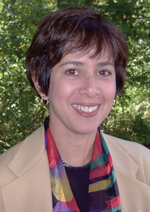 WASHINGTON—The last JINSA Report noted that Israel finds its two formerly immutable defense principles undermined and is now fighting a war of attrition inside its borders with its civilians under attack. In response, readers asked two important questions. WASHINGTON—The last JINSA Report noted that Israel finds its two formerly immutable defense principles undermined and is now fighting a war of attrition inside its borders with its civilians under attack. In response, readers asked two important questions.
Q: I was in Sderot two week ago. [There is tension there] but not in Jerusalem. I believe therein lies the problem. The missiles are at an "acceptable" level. There are no riots in the street... Life goes on, the economy is booming and everything is taken in stride. Even in Sderot there are no mass demonstrations against the government! Why?
JINSA: In February, JINSA participated in a seminar with the Institute for National Security Studies (INSS) in Israel. There, an Israeli military analyst made the point that when a free population has a relatively low birth rate and a draft army, it is generally unwilling to go to war and the government has to take that into account. Therefore, it will hesitate to start or respond to hostilities. Think of Western Europe, where there was conscription until the demise of the Soviet Union, and pacifism ruled. (It still rules; there is little for which most Europeans would go to war.)
You wrote, "The missiles are at an acceptable level." That was the point made by our military guests at the JINSA Board Meeting. "No one wants to reoccupy Gaza; the casualties will be very heavy." An Israeli journalist wrote in a note to JINSA, "Anything is better than doing [reserve duty] in Gaza again." If that is the public attitude - anything is better than reserves in Gaza - there will be no public demand to halt the missiles. In that sense, the Israeli government is currently consonant with public will.
The withdrawal from Gaza, like the withdrawal from Lebanon in 2000, was popular at first because the Israeli public did not see the purpose of risking the lives of IDF soldiers in either place. There is a certain level of "stiff upper lip" among Israelis - a willingness to tolerate attacks for a period of time to avoid a larger scale war that would involve larger numbers of military casualties. But to the extent that civilians take casualties to protect the military, the normal relationship between the people and its army is inverted. The IDF will not be willing to let that continue indefinitely, which accounts for the public statements by military officers that there will be an incursion into Gaza.
The Palestinians assumed the Israeli public would crumble under the onslaught of the so-called second intifada. They were wrong. The people proved their ability to withstand terrorism and then supported IDF operations in Jenin after the Passover Seder bombing.
Hezbollah broke the "agreement" for quiet by kidnapping two soldiers and killing seven others in 2006. The government had to respond and the public was solidly behind it - even and especially - while rockets were falling on Haifa. Hezbollah was surprised and Israel's deterrent at least temporarily restored. Public attitudes toward the Olmert government only changed after the last bloody ground action, close to an expected ceasefire.
One might assume that the Ashkelon bombing will bring the Israeli public closer to the limits of its tolerance for missiles from Gaza, and the IDF closer to its traditional role as protector of the homeland and the civilian population.
Q: The IDF can enter the Gaza (or a part of it) as it entered Jenin (in 2002). But after that, what happens? Can the IDF replicate (or reasonably substitute for) the post-cleanout posture it has outside Jenin with networks of intelligence inside? What will happen inside Gaza after a "cleaning out"?
JINSA: The question is not what will "happen" in Gaza, but what Israel intends to accomplish in Gaza if it sends the IDF in. This is a familiar refrain for JINSA Report readers - the civilian leadership cannot tell the military to "do something" somewhere; it has to tell the military what it wants done. The military then has to have the plan, the capability and the resources to achieve the goal. And it has to execute. If the first plan doesn't get you to your end game, you have to change or fix the plan. But you cannot change the end game without military and political repercussions.
For historical precedent, consider WWII or our own Civil War - the end games of both were unconditional surrender (of the Axis and of the South to keep the Union whole). Both had major flaws in planning and were disasters at the outset, resulting in enormous casualties. Strategies and generals were changed, but the goal never moved.* Iraq is an example of what happens when the goal does move. If deposing Saddam was the end game, the U.S. military did a magnificent job and could have been withdrawn in the summer of 2003. But when the civilian leadership moved into nation building, the military did not have the resources in place for the conflict that ensued. After substantial difficulties, a change in plan and generals was followed by tremendous success toward the new goal of a stable Iraq with a government responsive to the people.
"What is Israel's goal in Gaza?" is the question.
JINSA has previously suggested that the United States withdraw its support for an independent Palestinian state because that support was predicated on changes the Palestinian leadership has refused to make. (That is their right, but then it is our right to withdraw support.) We could envision working toward the emancipation of Gaza as a city-state - but it would require the uprooting of Hamas from Gaza. Israeli military officials have already said that an Iranian/Hamas outpost in Gaza is unacceptable, so we assume there is an understanding in the IDF of the military cost of removing it. If that is the course the Israeli government chooses, we would hope there is a corresponding political plan. If the goal is only to drive Hamas underground for a time, it should be acknowledged that the IDF has been given a limited mission that is a holding measure, not a fix.
The real key to the Winograd Commission Report was the understanding that the Israeli government had been presented with two military options for Lebanon, each having a different end game and each requiring different military resources. The government entered Lebanon without deciding which it was pursuing, pursued both and failed at both.
That is unlikely to happen again.
* Essential summer reading on this point: the first two books of Rick Atkinson's WWII "Liberation Trilogy," An Army at Dawn and The Day of the Battle.


TORAH ON ONE FOOT
It's not the devil's fault, but our own
By Rabbi Leonard Rosenthal
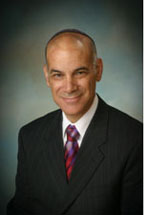 SAN DIEGO—There are many times when I make a mistake or do something wrong that I am tempted to repeat the comedian Flip Wilson's immortal line: "The devil made me do it!" SAN DIEGO—There are many times when I make a mistake or do something wrong that I am tempted to repeat the comedian Flip Wilson's immortal line: "The devil made me do it!"
Unfortunately, blaming the devil does not fit in with Jewish theology. While the Bible speaks of "Satan," who tries to make trouble for Israel, Satan is an angel of God and has no authority or power of his own. He is not an independent divine being with powers almost equal to God's. Jews do not believe that the devil or Satan tempts human beings to defy God. The source of our rebelliousness and willingness to do evil has its source in our own hearts and souls. The rabbis called this propensity toward evil the yetzer harah, the evil inclination, as opposed to the yetzer hatov, the good inclination, that part of our psyches that propels us toward nobility.
When I teach classes I often suggest that students think of the yetzer harah and the yetzer hatov as the two angels of cartoon fame. The "devil" angel sits on one shoulder and urges you to wreak havoc while the "good" angel on your other shoulder exhorts you to do good.
It would be nice to believe that our yetzer tov always dominates our yetzer harah. Unfortunately, that is not the case. Most human beings are constantly pulled back and forth between their selfish and beneficent desires. We must be constantly on guard to insure that our good inclination dominates our evil one.
In Parashat Beha'alotcha, Moses instructs the Israelites how to defend against their enemies: "When you are at war in your land against an aggressor who attacks you..." (Num. 10:9) Rabbi Yeshaiya HaLevi Hurvitz teaches that the Torah is not just instructing us on how to deal with external enemies, but internal ones as well. One of our worst internal enemies is each person's yetzer harah, which leads us to sin. In the cited verse, he notes, the Torah does not use the singular Hebrew form: "when you (singular) are at war with your enemies," but rather the plural: "when you (plural) are at war with your enemies."
The use of the plural is a hint that besides referring to an external battle, the Torah is also referring to the individual's internal battle between the yetzer tov and the yetzer harah. This is a battle which will never end but will be waged every day of our lives. We must always remain vigilant about our actions.
While we would love to be able to blame the devil or someone else for our bad deeds and poor judgment, our tradition teaches that responsibility lies with us alone.


AMAZING STORIES OF JUDAISM
The tragedy of the repentant book burner
By Rabbi Baruch Lederman
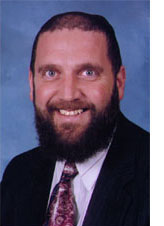 SAN DIEGO—"There were many great Torah authors and many styles of mussar. Not every author can speak to every soul; there are after all so many different types of souls. The exception to this is Rabbeinu Yonah Girondi (and specifically his book on teshuvah). His writings are appropriate to every Jew in every time." (Rabbi Chaim of Velozhin as quoted by the Chofetz Chaim) SAN DIEGO—"There were many great Torah authors and many styles of mussar. Not every author can speak to every soul; there are after all so many different types of souls. The exception to this is Rabbeinu Yonah Girondi (and specifically his book on teshuvah). His writings are appropriate to every Jew in every time." (Rabbi Chaim of Velozhin as quoted by the Chofetz Chaim)
Rabbeinu Yonah came from Girona, in Catalonia. He lived in the thirteenth century, was a grandson and student of the Ramban and the teacher of the Rashba. He is mentioned several times in the commentary of the Tosafos on the Talmud, referred to there as Rabbi Yonah.
He was also considered the most prominent pupil of Rabbi Shlomoh Min HaHor who was the leader of the opponents of Rambam's philosophical works. As such, he was one of the signers of the infamous ban proclaimed against the Moreh Nevuchim and the Sefer HaMadda in 1233. According to his pupil, Hillel of Verona, Rabbeinu Yonah felt that these editions were philosophically dangerous to the masses and was the instigator of the public burning of Maimonides' writings by the church in 1233.
Nine years later, in 1242, twenty-four wagon-loads of the Talmud were burned by the church at the very same place where the philosophical writings of Rambam had been destroyed. Rabbeinu Yonah, realized that he made a mistake and publicly admitted in the synagogue of Montpellier that he had been
wrong in all his acts against the works and fame of Maimonides.
In his repentance he vowed to travel to Eretz Yisroel and prostrate himself on the grave of the Rambam and implore his pardon in the presence of ten men for seven consecutive days. He left France with that intention, but was detained, first in Barcelona and later in Toledo. He remained in Toledo, and
became one of the great Talmudical teachers of his time.
In all his lectures and in his writings he made a point of quoting from Rambam; always mentioning his name with great reverence. Rabbeinu Yonah's sudden death from a rare disease was considered by many as a consequence of failure to fulfill his vow to journey to the grave of Rambam. He died in
Toledo, Spain in November of 1263.
Rabbeinu Yonah wrote a number of works; it is surmised, to atone for his earlier attacks on Rambam and to emphasize his repentance. His Iggeres HaTeshuvah, Shaarei Teshuvah, and Sefer HaYirah are among the most popular ethical treatises in the Judaic library. The Shaarie Teshuvah first appeared in Fano (1505) with the Sefer HaYirah, while the Iggeres HaTeshuvah was first published in Cracow (1586). All have been reprinted many times, separately and together, as well as numerous extracts from them. Rabbeinu Yonah actually wrote many more treatises which were compiled together and published as Shaarei Tzedek; unfortunately most of these writings have been lost.
Rabbi Akiva Eiger commented that he was particularly moved by the mussar works of Rabbeinu Yonah because aside from being a great ethicist, Rabbeinu Yonah was one of the greatest Talmudic scholars of all time as well as a authority on Jewish law. Rabbi Akiva Eiger viewed Rabbeinu Yonah's mussar
comments as legally binding.
Rabbeinu Yonah on Pirkei Avos, presents this exact blend of his abilities. In contrast to the hundreds of commentaries on Pirkei Avos that use the text of Avos as a springboard for homiletic and ethical preaching, Rabbeinu Yonah explains the simple meaning of each Mishnah. This creates a new possibility for inspiration, where one is struck by the beauty and awesome timelessness of the words of the Sages. [The foregoing true story was submitted by Rabbi Yaakov Haber, TorahLab.org. TorahLab has just published the first ever translation of Rabeinu Yonah's classic commentary on Avos.]
Dedicated by Max Ader in memory of his father Murray Ader, Moshe ben Shlomo Elya.


'Chopin' returns to The Old Globe Theater
By Gail Feinstein Forman
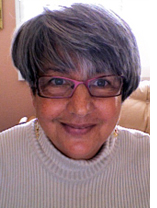 SAN DIEGO—Hershey Felder has toured the world showcasing the lives and music of Beethoven Chopin, and Gershwin. The son of Holocaust survivors, he began his foray into this realm of musical “playlets” in a most unusual way and in a very unlikely place. SAN DIEGO—Hershey Felder has toured the world showcasing the lives and music of Beethoven Chopin, and Gershwin. The son of Holocaust survivors, he began his foray into this realm of musical “playlets” in a most unusual way and in a very unlikely place.
In 1995, Felder, who speaks five languages, including Yiddish and Hebrew, accompanied Steven Spielberg to Europe to conduct interviews for Spielberg’s Survivors of the Shoah Visual History Foundation. One day, in Krakow Poland, he met a survivor who related a story about how he used to amuse the guards at Auschwitz by whistling Gershwin’s Rhapsody in Blue. The survivor felt that his actions and the music had saved his life.
 Felder was so moved by the survivor’s story, that he put together his first one-man show about Gershwin called Sing! In 1998. It played at a small theater at UCLA. In later years, his small play morphed into his now tremendously successful trilogy of famous composers. Felder was so moved by the survivor’s story, that he put together his first one-man show about Gershwin called Sing! In 1998. It played at a small theater at UCLA. In later years, his small play morphed into his now tremendously successful trilogy of famous composers.
Today, when Hershey Felder describes his play Monsieur Chopin, now playing at the Old Globe Theater, he says “the story is about how he brings the piano to life, and he talks about his soul and how it relates to his music.” Playing Chopin himself in this encore performance at The Old Globe Theater, Felder brings us back to 1840’s Paris and Chopin’s inner and outer circle.
Framed in a beautifully rendered postcard style with gilded gold edges rimming a border from the top to the bottom, the Old Globe stage was now Chopin’s Paris salon of March 4, 1848. Hershey Felder walks through the orchestra section, greets his “students” who are there for a music lesson, and then ascends the stage. He immediately sets the mood of the next 90 minutes- “Chopin light” in narrative, a fantastically rendered performance musically.
Felder uses events in Chopin’s life to segue in particular musical pieces. In a way, his style in reminiscent of Leonard Bernstein’s Young People’s Concerts which acquainted audiences with the composer and his or her music. However, here Felder is enacting the role of Chopin himself.
Chopin’s life is revealed in bits and pieces. We learn about this family and their musical background, his strong Polish nationalism, his rivalry with Liszt, and his tormented relationship with George Sand.
Most interesting was George Sand’s comments about the extraordinary talent for musical improvisation that Chopin possessed. She said that often in the evenings, he would sit at the piano and play one note, called the “Blue Note.” After, a few more notes developed into bars, and you could hear him “look for a melody.” Indeed, that comment, “looking for a melody,” seemed to capture the essence of Chopin’s haunting and melodic music.
Although Felder himself is a good impressionist, I found the breaks in the scenes to change characters distracting rather than revealing. I also felt the need for a stronger narrative to add coherence to this musical- play. There was a lot of isolated drama, with clapping thunderstorms and gloom, but there seemed no center in which to anchor it.
A ninety-minute performance makes an incredible amount of demands on the performer. Felder holds the stage and is a virtuoso piano player. As a musical interpreter of Chopin, he had an extraordinary touch. He suffuses the music with an emotional intensity worthy of the composer he represents.
Felder plays at least a dozen Chopin compositions, including Prelude in C Minor, Mazurka in A Flat Major and the lilting Nocturne in E Flat Major Opus 9. It is apparent he has great respect and love for this music. And the music itself is the highlight of the show.
Monsieur Chopin will continue at the Old Globe Theater through June 22. For ticket information call (619) 234-5623.


L.A. BEAT
The Secrets of the Israel Film Festival
By Cynthia Citron
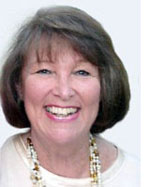 HOLLYWOOD, California- The 23rd annual Israel Film Festival got underwayon Thursday, June 12th, when invited guests, including a large contingent of Israeli filmmakers, filled the Cinerama Dome at the ArcLight in Hollywood to view the U.S. premiere of director Avi Nesher’s religious drama, The Secrets. HOLLYWOOD, California- The 23rd annual Israel Film Festival got underwayon Thursday, June 12th, when invited guests, including a large contingent of Israeli filmmakers, filled the Cinerama Dome at the ArcLight in Hollywood to view the U.S. premiere of director Avi Nesher’s religious drama, The Secrets.
Like Barbra Streisand’s Yentl, The Secrets deals with a young girl, Naomi (Ania Bokstein), who dreams of becoming a rabbi. Daughter of an ultra-orthodox rabbi, Naomi is engaged to her father’s star pupil, an arrogant and unpleasant young man whom she obviously doesn’t love. Seeking time, and relief from the recent death of her mother, Naomi retreats to Safed, a town dedicated to art and to religious study (the Kabbalah originated there), high in the hills of Israel. Enrolled in a girls’ midrasha, she makes friends with a rebellious student, Michelle (Michal Shtamler), and together they explore both the religious life and the revolutionary new aspirations of women within the restrictive confines of Judaism.
Living just across the cobble-stoned alleyway is a beautiful French woman, Anouk (Fanny Ardant), who has come to Safed to seek redemption after having served 15 years in prison for murdering her lover. As a charitable project, the head of the midrasha assigns Naomi and Michelle to supply her with groceries and look after her, because she is dying painfully of cancer and heart disease. Caught up in Anouk’s story and her quest for redemption, the two girls gradually get drawn into helping her with that as well. While Naomi researches the forbidden Kabbalah texts to find rituals to lead the troubled Anouk to redemption, Michelle, who speaks French, serves as translator. Ironically, the rituals Naomi comes up with often resemble those of a Catholic exorcism of demons.
While The Secrets is obviously not a film for atheists, the presentation of the ultra-Orthodox way of life and the continual praying to an ever-present God is handled with sensitivity and respect. In a discussion after the film, director Nesher said, “I would hate to see this way of life destroyed,” and noted that in making the film “we were careful not to be condescending.” He also noted that the film had received no criticism from rabbis or others in the Orthodox community.
“There is a revolution in women’s rights in Israel,” Nesher said. Women should be anything they want to be,” he added, “and this film is to honor them. This film is about empowerment.”
Said Ania Bokstein, who had come to Hollywood for the American premiere of her film, “It’s all about the power of strong women.”
On the evening before the screening of The Secret, a Gala Awards Dinner was held at the Beverly Hilton Hotel. Kirk Douglas, cited as an “Academy Award-Winning Legend” won the Lifetime Achievement Award; father and son Carl and Rob Reiner each won an Achievement in Film Award; Producer/ Director/ Writer Menahem Golan, one of the Founding Fathers of the Israeli film industry, which is celebrating its 60th year at this year’s festival, won the Cinema Pioneer Award; and Jeffrey Berg, chairman and CEO of talent agency International Creative Management, Inc. (ICM), won the Visionary Award.
The Israel Film Festival continues through June 26th, screening some 60 films at Laemmle Theaters in West Hollywood (the Sunset 5), West Los Angeles (the Royal), and the San Fernando Valley (the Fallbrook 7). For information and tickets, go to www.Israelfilmfestival.com or call (877) 966-5566
,

Nancy Harrison
cruise & tour specialist
(619) 265-0808

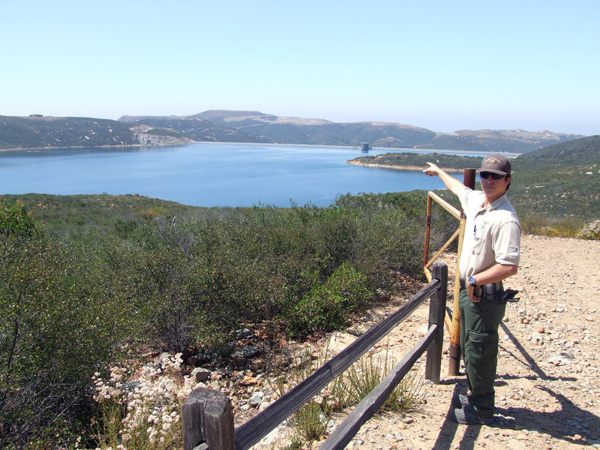
THE JEWISH CITIZEN
The Israel of Mt. Israel wasn't Jewish
By Donald H. Harrison
 MOUNT ISRAEL, California—This foothill in San Diego County has been “partitioned. ” Approaching it from Lake Hodges on its south and east, it still is known as Mount Israel. However, its more-rural northeastern slope overlooking Olivenhain Dam and Reservoir is described today as part of the Elfin Forest Recreational Area. MOUNT ISRAEL, California—This foothill in San Diego County has been “partitioned. ” Approaching it from Lake Hodges on its south and east, it still is known as Mount Israel. However, its more-rural northeastern slope overlooking Olivenhain Dam and Reservoir is described today as part of the Elfin Forest Recreational Area.
Mandy Rodriguez, a spokesperson for the Olivenhain Municipal Water District, said the change in nomenclature was pragmatic. People traveling between Rancho Santa Fe and Escondido on the Del Dios Highway often would try to turn north on Mt. Israel Place, only to find a gated community at the top, with no access to what previously had been named the Mt. Israel Recreational Reserve.
Mount Israel was named after 19th Century San Diego pioneer Robert Decatur Israel, a native of Pittsburgh whose father was described as Pennsylvania Dutch and mother as Scotch-Irish. He wasn’t Jewish, but because of his surname many people today mistakenly assume that he was, and that Mount Israel has something to do with Eretz Israel, which it doesn’t.
Robert Decatur Israel had fought in the Mexican-American War, including the famous Battle of Chapultepec, and when he was mustered out of the service, like other veterans, he received the right to a 160-acre federal land grant. He chose land in what then was known as the Aliso area of San Diego County, where he built an adobe home on a site that is now covered by 24,000 acre feet of water—the equivalent of 8 billion gallons—behind the Olivenhain Dam.
However, for most of his life, Israel lived either in Old Town San Diego, where he worked as a blacksmith and as a constable, or at the tip of Point Loma where he was the lighthouse keeper at what today is known as the Cabrillo National Monument.
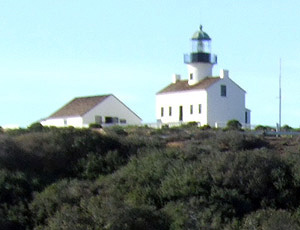 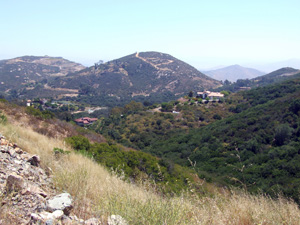
—
When I wrote the biography, Louis Rose: San Diego’s First Jewish Settler and Entrepreneur, people with knowledge of local history would sometimes ask how I could be so certain Rose was the first Jew; hadn’t Israel arrived in San Diego even before Rose came in May of 1850?
Yes, he had, but clearly Israel wasn’t Jewish. As documented in a 1983 University of San Diego master’s thesis by Patricia F. Klenner, his mother was the former Mary Witherspoon of Scotch-Irish ancestry. Even if his father Joseph Israel had some Jewish forbearers among his “Pennsylvania Dutch” ancestors—and there is no evidence that he had—the very fact that Robert’s mother was not Jewish meant, as a matter of halacha, that Robert Israel wasn't Jewish either.
Furthermore, Israel and a young Mexican bride, Marie Arcadia Alipas, were married by a priest in 1852 at the Casa de Estudillo in Old Town, and had four children: Henry Clay Israel, Joseph Perry Israel; Robert Lincoln Israel, and a second Joseph Perry Israel, born after his older brother had died. When Robert Decatur Israel died at age 81 in 1908, services were officiated by an Episcopal priest. Buried at the Fort Rosecrans National Cemetery (known formerly as the U.S. Government Cemetery on Point Loma), his grave 74 in section 75 bears is marked by a stone with a Christian cross.
Early in his residency in San Diego, Israel became a member of the Fitzgerald Volunteers which set out in 1851 to capture Antonio Garra, leader of a local Indian insurrection. The Fitzgerald Volunteers came back empty handed, but after Garra was captured by another force, Israel commanded the firing squad that executed Garra right at his grave in the El Campo Santo cemetery in Old Town.
More than a decade later, Israel served on the school board that became embroiled in a fight after school teacher Mary Chase Walker dined with a mulatto woman at a local restaurant. It was a natural thing to do, as the woman had shown her hospitality on the ship that had brought the teacher to San Diego from San Francisco. However, a white woman dining with a woman with black parentage created an uproar in the town that included many residents originally from the slaveholding South.
Some parents withdrew their children from the school, and there were demands that the school teacher be fired. Israel was dead set against the idea, saying he wouldn’t give in to the prejudices of the southerners. The crisis eventually was solved when another school trustee, merchant Ephraim Morse, decided to marry the school teacher, thereby providing her with a face-saving departure and an alternative means of support.
Israel was best known as the lighthouse keeper. He and his family lived alone on the Point, making sure that the lighthouse was illuminated each night. Set atop a high palisade, the lighthouse sometimes was enshrouded in fog, and in such cases, according to Klenner, “Israel sounded his shotgun to warn approaching ships.” She suggested that he “doubtless spent many a cautious nightwatch in the lantern tower.”
There was a time that one of the rooms in the lighthouse—furnished by Cabrillo National Monument to reflect the life of Robert and Marie Israel—had as an “artifact” within it, a piece of cloth that looked like a tallit—perhaps put there by someone in the mistaken belief that Israel was Jewish and had kept a prayer shawl close by. The tallit no longer is there; modern-day curators now are well aware that the Jewish religious garment was out of place.
Eventually, another lighthouse was built closer to the Pacific Ocean shore line, in the area adjoining Cabrillo National Monument now occupied by a U.S. Coast Guard Station. After it was opened, Israel ran afoul of a government inspector, receiving a disciplinary notice about the lens being dirty and the grounds in disorder. Israel dashed off a reply criticizing the quality of water in the new rainwater catch basin—a reply that apparently was considered so insubordinate that Israel was dismissed as the lighthouse keeper in 1892. He had been the principal lighthouse keeper for nearly two decades.
He thereafter moved briefly to the home in the Aliso area, which his son Robert Lincoln Israel had named the “Hardscrabble Ranch,” but eventually returned to the Old Town area. The ranch area was examined before construction of the dam as part of an environmental impact report prepared by Brian F. Mooney Associates of San Diego.
Mooney noted that a previous archaeological survey of the adobe structure “recovered a vast and varied assemblage of artifacts as well as architectural information….The architectural remains and contents of one privy constituted the sole material legacy from the family of Robert Israel…. The Israel family sold the residence in 1896, and it passed through two families before being purchased by Eli Taylor in 1912. Most recovered cultural materials, including livery items, tools, armaments, furniture, consumer prodjucts and personal items are from the Taylor occupation.”
Park ranger David Sanchez informed me and friend Dan Schaffer that the Olivenhain Dam and Reservoir is the central feature of the 750-acre Elfin Forest Recreational Reserve. A graduate in history from California State College at San Marcos, Sanchez said an interpretive center eventually will be built from grant funds.
Sanchez, who grew up in nearby Encinitas, says his heritage is part Mexican and part Apache, and that he is looking forward to the opportunity to participate in the development of the cultural exhibits for the intepretive center.


SDJA STUDENT QUARTERLY
{Editor's Note: This concludes our series reprinting articles that appeared in the June issue of the SDJA Student Quarterly, a publication of San Diego Jewish Academy. Donald H. Harrison, editor of San Diego Jewish World, who served as advisor to the 20077-2008 student newspaper, commented: "There are incredibly talented students at San Diego Jewish Academy, who will be successes in whatever fields they choose to enter. For the sake of future news consumers of the world, I hope some of them will choose to go into journalism."
JCC Maccabi games head for San Diego
By Alexa Katz
 This summer from August 3 to 8 more than 1500 Jewish teens from all over the United States and the world will be sprinting to San Diego for the 2008 JCC Maccabi games: Reach the Beach. This summer from August 3 to 8 more than 1500 Jewish teens from all over the United States and the world will be sprinting to San Diego for the 2008 JCC Maccabi games: Reach the Beach.
The Maccabi games are a longstanding Jewish tradition which has produced athletes such as swimmer Lenny Krayzelburg and professional soccer player Ethan Zohn, who is most well known for being on the reality show Survivor. The Maccabi games happen once a year in August when four separate delegations throughout the United States and Canada welcome Jewish teens to their city. The games were originally created to honor the eleven Israeli athletes killed by Arab terrorists at the Munich Olympics, and each year at the opening ceremonies there is a tribute memorializing their legacy. Both male and female athletes participate in a wide variety of sports such as golf, bowling, track, dance, basketball, volleyball, swimming and soccer competing to win either gold, silver or bronze medals.
Judaism is stressed through things like Hang Time, in which Israeli scouts from San Diego's sister region in Israel, Sha'ar Hanegev, will teach the athletes about Israel. The Days of Caring and Sharing, or DOCAS, a day of the Maccabi games in which athletes take a break from competition and give back to the community by participating in a community service project which stresses the Jewish ideal of gemilut hasadim. This year the San Diego delegation will have the athletes work at a carnival for children at risk.
In addition to opening ceremonies which will be hosted at Cox Arena in SDSU and closing ceremonies which will be a party on the U.S.S. Midway, an aircraft carrier which has been converted into a museum, the athletes will also gt to explore San Diego with their host families and participate in another party at Sea World.
Jacob Katz, my brother, participated in the 2007 games in Orange County and will participate in 16 and under basketball in the San Diego games. He stated that the Maccabi games are "an awesome experience." He went on to say that his favorite parts were "meeting Jewish teens from all over the world who like sports as much as I do." He added that "competition is hard and on the court we represent our home town but off the court everyone is friendly."
The San Diego delegation has a history of excellence. Not only are they consistently one of the biggest delegations in attendance at the games, but they also have a history of winning over 100 medals and dominating in the sports of soccer, golf and swimming.
The Jewish Community Center has recruited over a thousand volunteers and six hundred and fifty host families to help run the games. Many of these volunteers, game chairpeople and athletes are from San Diego Jewish Academy's tight community. The game venues will be at the newly renovated Jewish Community Center, Canyon Crest Academy as well as at San Diego Jewish Academy.
Organizers are still looking for athletes to participate in this year's games. So if you are 12-16, don't hesitate to call the JCC or go on their website, www.lfjcc.org
Fagan Shatters 46-year-old strike-out record
By Eitan Frysh #
 A record that has waited 46 years to be broken was shattered on Wednesday, May 14, in what will be remembered as one of the proudest sports moments in San Diego Jewish Academy history. Michael Fagan, 10th grader, broke the San Diego County-California Interscholastic Federation's season record for strike outs en route to an 18-2 victory over San Pasqual Academy. A record that has waited 46 years to be broken was shattered on Wednesday, May 14, in what will be remembered as one of the proudest sports moments in San Diego Jewish Academy history. Michael Fagan, 10th grader, broke the San Diego County-California Interscholastic Federation's season record for strike outs en route to an 18-2 victory over San Pasqual Academy.
The six strike outs that Fagan needed to break Ron Scagliotti's record of 171 strike outs, set in 1962, were soon achieved, but Fagan didn't stop there. In the remainder of that game, and a subsequent playoff game, he built the record to 181 strike outs in a season, raising the bar for athletes both in the Jewish academy and in San Diego County.
The fanfare of applause that lingered after Fagan's achievement was soon to be repeated when Jack deTar hit a towering home run to center field, launching an assault on the "circuit." He went on to get a triple and a single, but lacked the double to have a hit of every kind in a single game.
Despite the excitement about Fagan's achievement, deTar's homer was the single-moment highlight of the game causing a large amount of excitement in the stands. DeTar was given a hero's greeting by his entire team as he crossed the plate.
When asked to comment on Fagan's achievement coach Glenn Doshay stated that "it's a once in a lifetime event" and that "people will only recognize many years from now when the record is still standing" how amazing Fagan's achievement really was. Coach Doshay also commented that it takes skill to break a record such as this but also, "luck on top of that."
The possibility that Fagan will break his own record next year may be slim, but we are still assured that he will be a force to be reckoned with.
y
Powder-puff football review
By Michelle Rizzi
This year's Purim celebration was something the SDJA high school had never experienced: a powder-puff football game. The event, organized by ASBC Sports Chair Rose Sheela, was highly successful.
The senior girls dominated the games, beating the sophomores 35-0 and the juniors 12-6.
The senior girls, clad in black from head to toe, were coached by Zuri Michan, Elan Frank, Matt Lyulkin and Michael Landau. They practiced two days prior to the event, held a secret meeting to go over plays and were ready to win.
"No one expected us to take it as seriously as we did," stated Meredith Kaplan, a senior. "And we fooled them." Charly Jaffe, a senior, described the games, specifically the senior-junior game, as "hardcore" (she has bruises to prove it). Rebecca Lipson, a senior, agreed: "It was...amazing! I loved it."
Ben Schenk, who led cheers, said that "anytime I got to see Anna Lepkowski take down a full grown woman brought instant gratification [to me]. Although the girls almost lost player Jordan Dubin, who was tackled by sophomore Aliyah Luther and was thought to have a concussion, they overall prevailed. "I'm still sore! My muscles ache!" said Naomi Finkelstein, a senior.
"It was quite the experience," reflected Frank, with a chuckle.


ADVENTURES IN SAN DIEGO JEWISH HISTORY
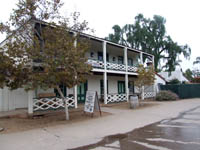
Robinson-Rose House
|
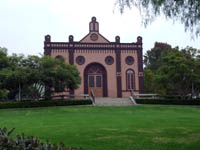
Old Temple Beth Israel |
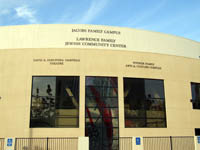
Lawrence Family JCC |
Editor's Note: We are reprinting news articles that appeared in back issues of various San Diego Jewish newspapers. You may access an index of the headlines of those articles by clicking here. You may also use the Google search program on our home page or on the headline index page to search for keywords or names.
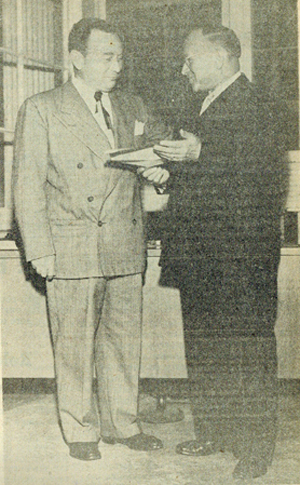 Progress Satisfies UJF Chairmen Progress Satisfies UJF Chairmen
From Southwestern Jewish Press, March 20, 1947, page 1
Chairmen representing the men's, women's and youth divisions of the coming United Jewish Fund Campaign met for luncheon Monday, March 17, at the Chi-Chi Supper Club to report on their pre-campaign progress. They have accepted their respective portions of the overall $350,000 San Diego quota, the women's $35,000 and the youth's 3,500 portion. The amounts of the pre-campaign pledges are mounting and indications are for a hasty conclusion of San Diego's goal. Shown in this photo by D. Miller are Lou Steinmann at left and Max Rabinowitz at right.
27 Years is a Long Time
From Southwestern Jewish Press, March 20, page 2
Twenty-seven years ago, Rose Neumann was elected president of the Jewish Welfare Society of San Diego—an organization which she helped found. This week Rose retired from that post after having been re-elected to head that agency since its inception.
Twenty-seven years is a long time—a long time to devote oneself unstintingly and unselfishly to the welfare of one's fellow human bein. The office offered no pay, but did demand untiring work, time, and effort. The thought of helping others less fortunate than herself was reward enough for Mrs. Neumann; for she is that type of person found so seldom, who enjoys doing for others.
News of her retirement must cause us to stop for a moment and review a little of the past. Memories pass through the mind, much as pictures on a screen—scenes of Mrs. Neumann getting up in the middle of the night to help an aged and infirm person who had just arrived in San Diego with no prospect of food or lodging; of Mrs. Neumann in court trying to help some Jewish man or woman in trouble—or applying for citizenship papers; a panoroama of just a busy little woman who has never been too busy or tired—day or night—to come to the aid of anyone in need of help.
Twenty-seven years is a long time, Mrs. Neumann. Such a long time that you have been taken for granted in that big job. This city salutes you, and believe us, Rose, sincerely admires you.
Relative Sought
From Southwestern Jewish Press, March 20, 1947, page 2
March 17, 1947
Mrs. Ray Solomon
509 Granger Building
Southwestern Jewish Press
San Diego 1, California
Dear Mrs. Solomon:
Because of the previous success we have had at locating missing persons through the medium of your newspaper we are once again requesting your aid in locating a relative sought by someone in Europe.
Jacob Weststein who lived in San Diego in 1912 is being sought by his relative Daniel Haller, now living in Russia.
Thank you for your past cooperation and your help in these matters.
Sincerely yours,
Jeanette M. Tobias
Jewish Welfare Society
{Return to top}

SAN DIEGO JEWISH WORLD THE WEEK IN REVIEW
California
Latino, African-American students learn about Holocaust at new L.A. museum by Michael Brau in Los Angeles
San Diego
San Diego Jewish World seeking to expand its staff locally and globally by Donald H. Harrison in San Diego
Stories from SDJA Student Quarterly:
—3 Generations Later, Yeah, Yeah, Yeah by Harry Doshay
—Comedy features SNL stars by Alexa Katz
—Award-winning Davka exhibit to be honored at Yad Vashem by Gaby Maio
Adventures in San Diego Jewish History
—March 13, 1947: 400 Attend Youth Rally
—March 13, 1947:Hadassah
—March 20, 1947: $350,000 Campaign to Open Wed. March 26
—March 20, 1947: An Open Letter to the San Diego Jewish Community
The Arts
Chapter Twelve of Reluctant Martyr, a serialized novel by Sheila Orysiek of San Diego
Middle East
Constraints on Israel deciding to retaliate in Gaza range from the legal to the strategic by Eran Lerman in Jerusalem
Has Israel forgotten defensive principles of short wars on other countries' territories? by Shoshana Bryen in Washington, D.C.
San Diego
Not everyone loves big-hearted volunteers by Sheila Orysiek in San Diego
Stories from SDJA Student Quarterly:
—Mind over matter: The Alesha Thomas story by Alexa Katz
—Maestro and the Diva at JCC by Charly Jaffe
—SDJA role in Afula concert by Eitan Frysh
Adventures in San Diego Jewish History
March 13, 1947: Jewish Labor Committee
March 13, 1947:Young Actors Win Laurels in Play
March 13, 1947:Drama, Prizes and Noisemakers at Party
March 13, 1947:Temple Beth Israel Purim Play-Party
The Arts
Redundant to say, The Hit is a hit by Carol Davis in Coronado, California
Thursdays With The Songs of Hal Wingard:
—#9, Getting Rich
—#26, Gypsy
—#33 You've Taken What I Had
San Diego
Stories from SDJA Student Quarterly:
—Passover in Promised Land by Gaby Maio
—Poway hate crime by Andrew Retzer
—Teens hone leadership skills at Jenna Druck confab by Alexa Katz
San Diego Jewish Trivia: Performers by Evelyn Kooperman
Adventures in San Diego Jewish History
—March 13, 1947: J.W.V. Aux President To Visit San Diego
—March 13, 1947: Zionist Group Plans Dinner
—March 13, 1947:450 Attend BB Youth Rally
The Arts
Shel Silverstein play: A cavalcade of crazies; play review by Cynthia Citron
Grief may lead to personal transformation; book review by Donald H. Harrison in San Diego
Middle East
Middle East theme song: Send in the Clowns? by Ira Sharkansky in Jerusalem
It's SRO for Shavuot in Old Jerusalem by Judy Lash Balint in Jerusalem
How kibbutz celebrates agricultural holiday by Ulla Hadar in Kibbutz Ruhama. Israel
San Diego
Block's win and long-range Nunez plans by Gary Rotto in San Diego
SDJA juniors scout prospective colleges by Brenna Decker, Michele Goldfarb-Shapiro, Becky Rudin and Asher Wittenberg from up and down the U.S. West Coast
Smarter than a 5th grader? I'd have to work myself through 1st grade competion first by Donald H. Harrison in San Diego
Adventures in San Diego Jewish History
—March 13, 1947:Form Community Relations Advisory Committee Here
—March 13, 1947: Crum Demands 100,000 Enter Palestine—Print Mufti Papers
—March 13, 1947: S.O.S. Passover Needs in Europe
Arts & Leisure
The emperor is even worse than naked by Sheila Orysiek in San Diego
Frieda's big surprise at Frida's Restaurant by Donald H. Harrison in Chula Vista, California
Play tackles nature of American Judaism by Cynthia Citron in Los Angeles
San Diego County
Three articles from SDJA Student Quarterly, a student publication of San Diego Jewish Academy:
—Across the Editor's Desk by Alexa Katz
—SDJA 'Spring Fling' went under water by Michelle Rizzi
—Fellowship to Jack deTar by Gaby Maio
Adventures in San Diego Jewish History
Link to previous editions
< BACK TO TOP
|
|
